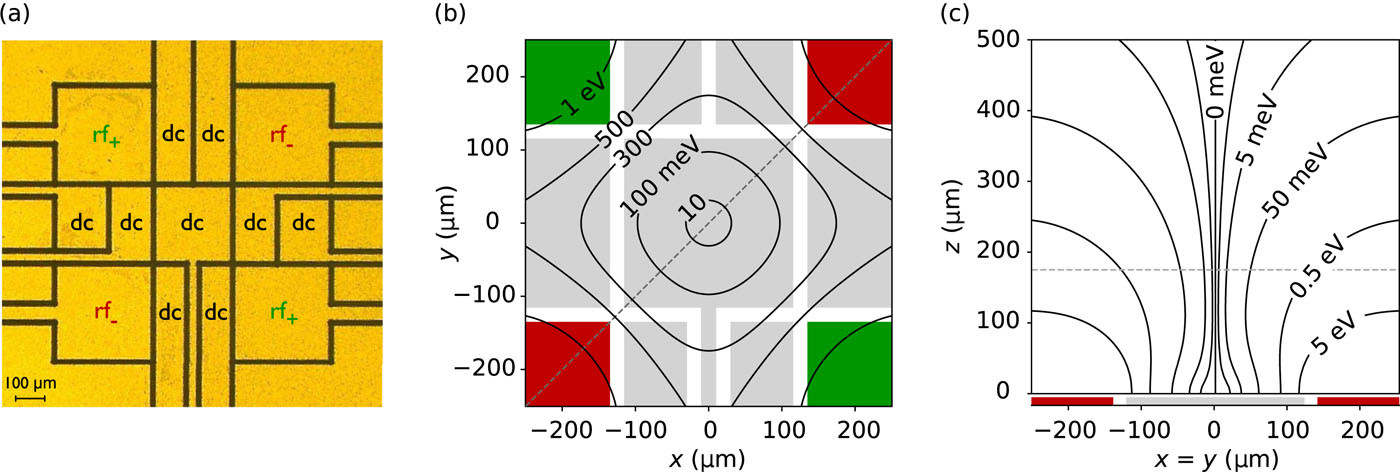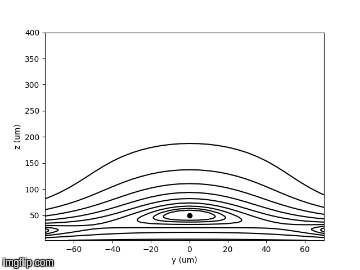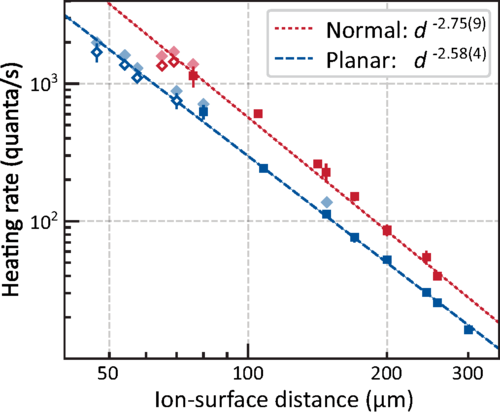Double Trap
Ion trap with tunable ion height
We designed and implemented a novel surface-electrode Paul trap that produces an RF-null along the axis perpendicular to the trap surface. This architecture enables control of the ion height, between 50 μm and 300 μm above the surface, using only DC electrodes, creating a platform for precision electric-field noise detection, trapping of vertical ion strings without excess micromotion, and potential applications for scalable quantum computers with surface ion traps.


Electric-field noise vs. ion height
With the capability of shuttling the ion up and down, we can perform measurements of the electric-field noise (see SQIP). We find the distance dependence of the noise to scale as d-2.6 in our trap and a frequency dependence which is consistent with 1/f noise. With significant evidence that we are not limited by technical noise sources, our distance scaling data is consistent with a noise correlation length of about 100 μm at the trap surface.

Quantum information transfer through a classical conductor
An oscillating trapped ion induces oscillating image charges in the trap electrodes. If this current is sent to the electrodes of a second trap, it influences the motion of an ion in the second trap. The expected time for a complete exchange of the ion motions is 1 ms for a trap with a characteristic size of 50 μm. This inter-trap coupling may be used for scalable quantum computing, cooling ion species that are not directly accessible to laser cooling, non-invasive study of superconductors, and realization of hybrid systems by coupling an ion-trap quantum computer to a solid-state quantum computer, e.g. a system of Josephson junctions.

This project is supported by AFOSR project “Prototype solid state quantum interface for trapped ions”.


